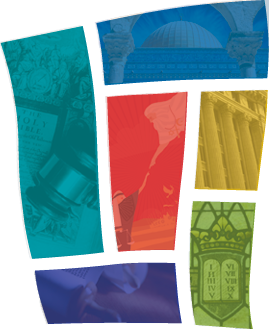
Three Myths about Religion and Politics (Part 1)
Elizabeth Shakman Hurd
Photo by Steve Johnson on Pixabay
Americans are often told that the U.S. government and its allies are working to stamp out the forces of intolerance around the world by promoting religious freedom and combatting violent extremism. I’ve always been baffled by these assertions. What do they mean? What does this look like in practice? My book Beyond Religious Freedom is an attempt to answer these questions by examining the assumptions about religion and about freedom that underlie the rhetoric and practice of American foreign policy. Based on a lecture given at Carleton College last spring, this essay evaluates three myths about U.S. foreign religion politics and policy that recurred as I researched these questions. Here, I evaluate these myths through a discussion of promising new work in history and Islamic studies that, in operating outside of the framing assumptions of American religious exceptionalism, offers new insight into the myth of American religious freedom.
Myth #1: The US promotes religious freedom abroad.
The U.S. government intervenes economically, religiously and politically to shape individual and communal lives in other countries under the heading of ‘religious freedom’ and related concepts. These interventions not only reflect U.S. strategic interests but also reinforce particular American understandings of what it means to be free: religiously, economically, and politically. Today the U.S. posits the flourishing of free religion as a requirement to emancipate societies from the troubles that ail them. This ‘right-sized’ free religion, recognized and supported by the state, is said to catalyze democratization, defang extremists, and usher in market-friendly peace and security. It is a shape-shifting construct that takes different forms in different settings. It can be hard to see.

An example is the U.S. military chaplaincy. Traditionally, chaplains were sent to the field to serve the religious needs of service members and their families. In 2009, however, the Department of Defense updated their duties to include community liaising and religious counter-insurgency. US Navy Chaplain Lieutenant Commander Nathan Solomon, for example, stationed in Afghanistan in 2011, was ordered to find ways to counter the Taliban’s message. Solomon and his Afghan liaison were to give Koran lessons to local citizens weekly by radio and to invite area elders and mullahs for a shura to discuss matters of religion and help the people to see “Islam’s true nature.”
Today chaplains serve as cultural consultants, sources of intelligence, religious educators, and liaisons with local religious leaders. An increasingly important part of their job is to promote what the U.S. identifies as benevolent religion and to marginalize forms deemed threatening to American interests, or incompatible with broader American understandings of what it means for religion to be free. This requires making decisions about which individuals and groups count as ‘religious,’ which leaders are eligible to speak on behalf of which communities, and which religious groups are best suited to fulfill American strategic objectives. Military chaplains are expected to identify and promote US-friendly religious authorities and communities in a context in which the government is understood as the handmaiden and governor of tolerant, nonsectarian religion.
How does a Navy Chaplain end up giving Koran lessons? What about disestablishment? What does religious freedom mean in the context of the US invasion and occupation of countries in the Middle East? Does the US Constitution apply abroad? Did it ever? The answer is no, not really, and it never really has.
What does religious freedom mean in the context of the US invasion and occupation of countries in the Middle East? Does the US Constitution apply abroad? Did it ever?
This history is illuminated in an excellent new book by Jolyon Thomas, Faking Liberties: Religious Freedom in American-Occupied Japan. Thomas begins with a question: who created the concepts undergirding religious freedom policy in US-occupied Japan? Drawing on an impressive bilingual archive, he shows that contrary to received understandings the Japanese had been vigorously debating their own constitutional religious freedom guarantee for decades before the Americans arrived in 1945. Japanese citizens had delivered speeches, written op-eds, lobbied their representatives, and protested legislation they found unfair. The American occupiers, in the meantime, could not agree on what religious freedom was. As Thomas explains, “the bravado in the occupiers’ rhetoric masked their anxieties about how to properly draw the line between religion and politics.” The upshot is that the Americans did not bequeath religious freedom to the Japanese. Rather, “Japanese elites helped the Americans reinvent religious freedom as a timeless, innate, universal human right.” Borrowing language provided by local experts, the occupiers made religious freedom appear to be what Thomas describes as “theologically neutral” and “culturally odorless.” These collaborations, in turn, “created the intertwined notions that all people are naturally religious from birth, that each individual must choose just one religious affiliation, that some religions are better choices than others, and that some ritual practices do not count as ‘religion’ at all.”
The idea that Americans simply exported religious freedom to Japan obscures the complex history of U.S. overseas political and religious engineering. It obscures the active role played by Japanese elites in constructing a particular ideal of religious freedom. It erases the contested U.S. domestic politics of religion that shaped U.S. intervention, and was shaped by it. Scholars across disciplines are retelling the history of America and American foreign policy in this field. There is much work to be done.

Elizabeth Shakman Hurd is Professor of Politics and Religious Studies at Northwestern University. She is the author of The Politics of Secularism in International Relations (2008) and Beyond Religious Freedom: The New Global Politics of Religion (2015) both published by Princeton University Press.
Recommended Citation
Hurd, Elizabeth Shakman. “Three Myths about Religion and Politics (Part 1).” Canopy Forum, October 2, 2019. https://canopyforum.org/2019/10/02/three-myths-about-religion-and-politics-part-1-by-elizabeth-shakman-hurd/

